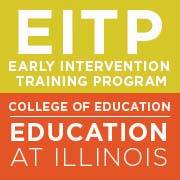Please scroll down for outcomes per discipline and other information, such as Target Audience, Course Content and Level
Course intent: To provide occupational therapists with the clinical & mathematical background to understand the qualitative and quantitative understanding of clinically relevant standardized norm-referenced speech testing instruments as well as all the relevant terms, methodology and formulation to determine eligibility and whether improvement is occuring over time in the child's adaptive and fine motor domains.
Relevance to occupational therapy: Occupational therapists in the early intervention setting are on the front line of evaluating children as part of a multidiscipinary evaluation for initial eligibility into early intervention or CPSE, and must regularly re-evaluate children with specialized standardized norm-referenced testing instruments to determine continued eligibility.
Provider will be able to: Identify use of standardized normed instruments for children assessment, evaluation, student academic placement, Individual Educational Plans (IEP's), Individual Family Service Plans (IFSP's), instructional planning, and determine eligibility for early intervention and pre-school, and school programs.
Provider will be able to: Identify concepts and definitions of percentage delays, raw scores, composite scores, standard deviations, chronological age, percentile rankings, growth scale values, z-scores, and developmental age equivalent and how they all relate together in computational formulation to determine eligibility and intervention.
Provider will be able to: Identify scoring and how to convert it to composite score using the Norm Tables in various standardized instrument testing for early childhood domain delays.
Provider will be able to: Identify the evolution of testing from its earliest subjective origins in clinical option that evolved to criterion-based testing, and eventually to standardized norm-based assessment instrumentation which is based on statistical metrics.
Provider will be able to: Identify difference between “chronological age” and “developmental age equivalents.
Provider will be able to: Identify why the same standard composite scoring scale of 100 (±15) is identical across differing instruments measuring differing constructs.
Provider will be able to: Identify – using appropriate formulae, provided via intensive case study, the conversion process of raw into composite scores via the norm tables and using these values for computation of standard deviation from the statistical mean, as well as percentage delay to determine eligibility for initial or continued service provision.
Provider will be able to: Identify how to determine eligibility in Early Intervention and Preschool Special Education program using scored gleaned during an assessment, and using them – along with norm tables to operationally formulate percentage delays and standard deviation form the mean composite to arrive at scientifically calculated eligibility criteria required for IDEA part C.
--
Content Area: 3050 Language Disorders: Assessment _ professional
--
Classification Code: OCCUPATIONAL THERAPY PROCESS
Evaluation
Occupational Profile
Analysis of Occupational Performance
Target level: All Occupational Therapists currently in early childhood practice areas. Individuals entering childhood practice- Definitions/Concepts that Provide a Framework







